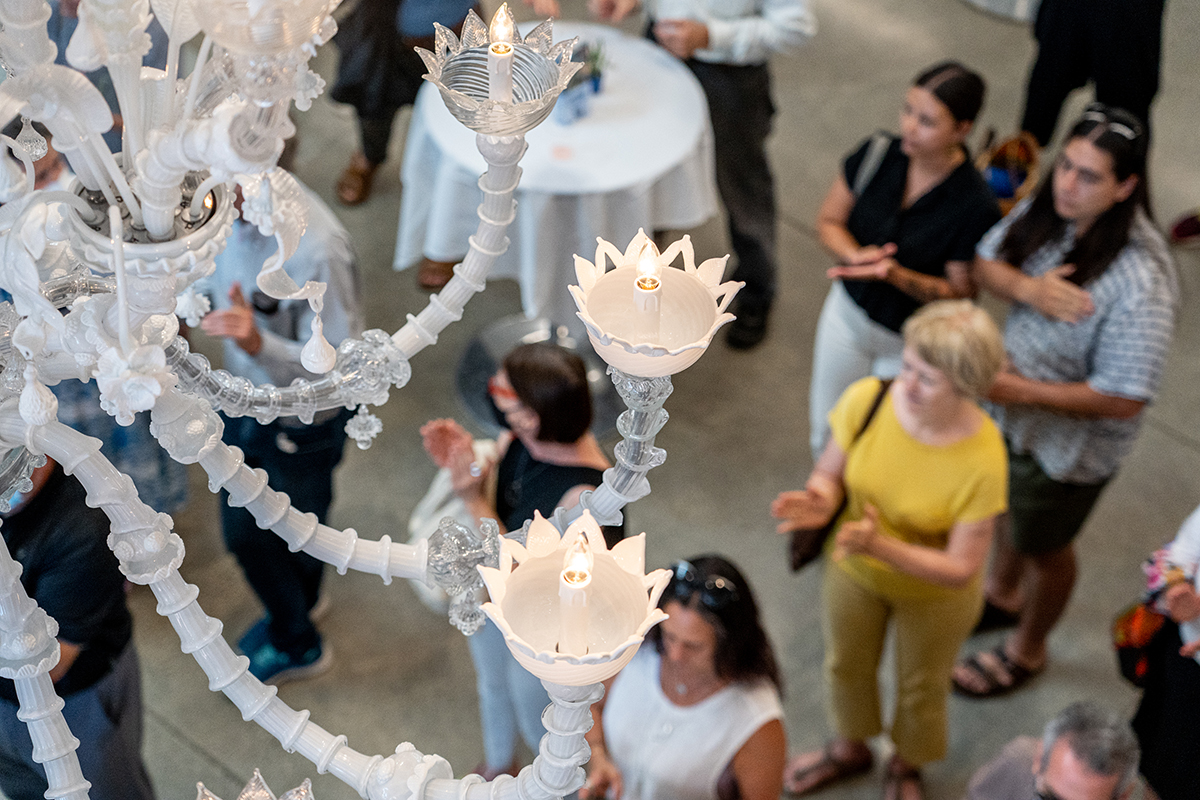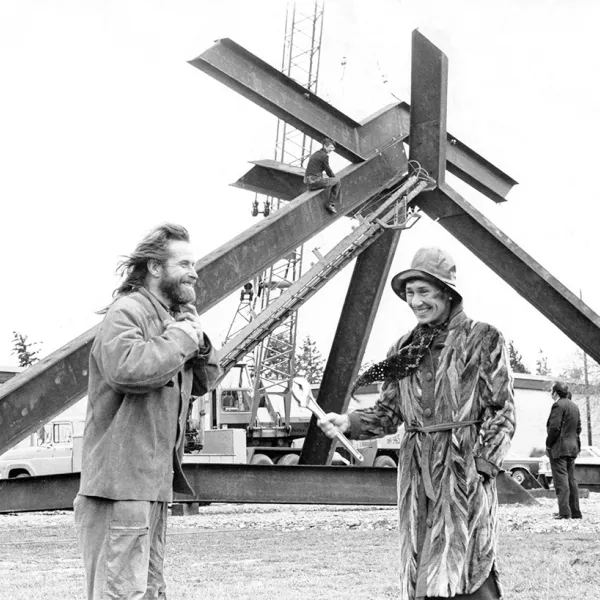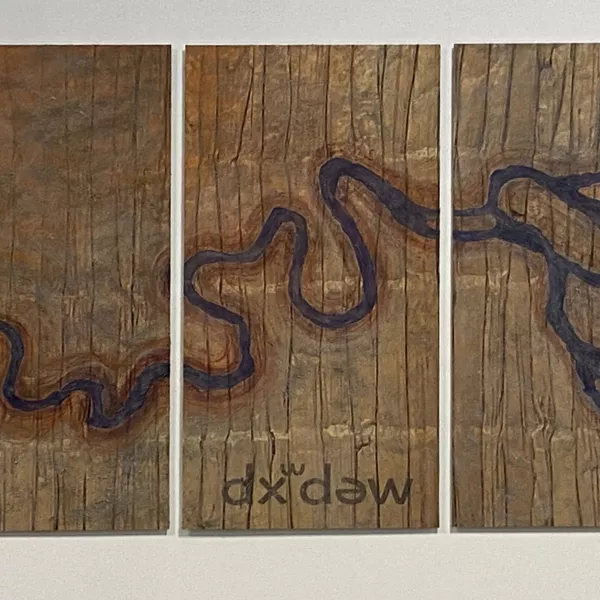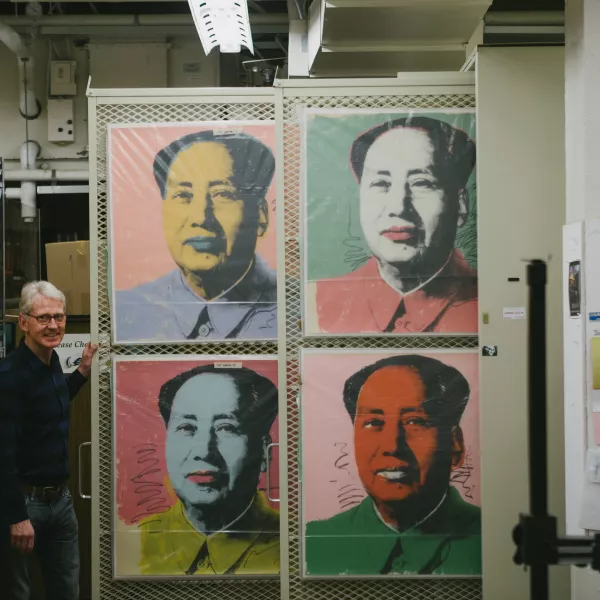Read more about Virginia Wright’s legacy at WWU and how Western’s Sculpture Collection came to be.
Artistic Gifts
Artist Fred Wilson and arts philanthropist Virginia Wright first met more than 30 years ago at the Seattle Art Museum, where Wright was a member of the board of trustees and Wilson was a guest artist whose work was beginning to change the course of contemporary art.
Wilson had just completed his groundbreaking 1992 “Mining the Museum,” which famously revealed and challenged racism in museums: The exhibits at Baltimore’s Maryland Historical Society included a display of slave shackles among ornate silver repoussé vessels. Another featured a whipping post surrounded by a collection of elegant 19th century armchairs.
As curators at museums across the country considered what Wilson’s art would mean to their own collections and practices, Virginia Wright worked with curators at the Seattle Art Museum to bring Wilson to the Northwest.
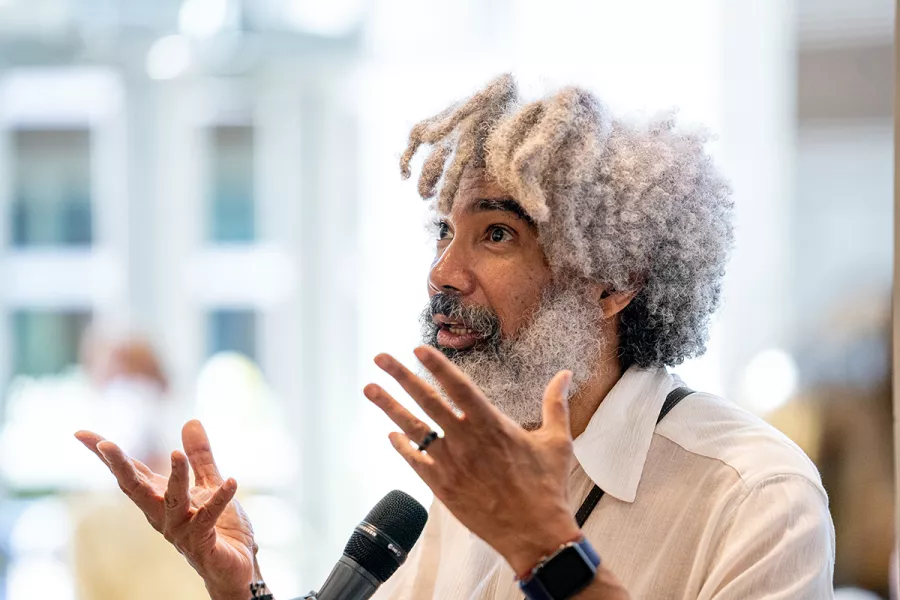
He spent a year at SAM building on his museology work in his 1993 book “The Museum: Mixed Metaphors.” He also spent time getting to know Wright, the visionary art collector and philanthropist.
Wilson found Wright extremely supportive of his work. “I wasn’t always knowing what she was thinking,” Wilson said, “but she was right there with the project.”
She also encouraged Wilson’s fascination in museum operations, inviting him to sit in on board meetings.
“I just loved her so much, and seeing the museum through her was really special,” says Wilson, who later joined the board of trustees of the Whitney Museum of American Art in New York City. “I was really engaged with the whole museum, deeply invested in learning about it and understanding Seattle through it.”
Wright passed away in 2020, after a lifetime of collecting and influencing art and artists in the Pacific Northwest and beyond. During their lives, Virginia and her husband Bagley Wright donated well over 200 works to Seattle Art Museum, and they helped fund several important public art projects. One of her most enduring artistic legacies is Western’s renowned sculpture collection, which includes a dozen pieces Wright commissioned, donated, funded or contributed to over her three-decade collaboration with WWU.
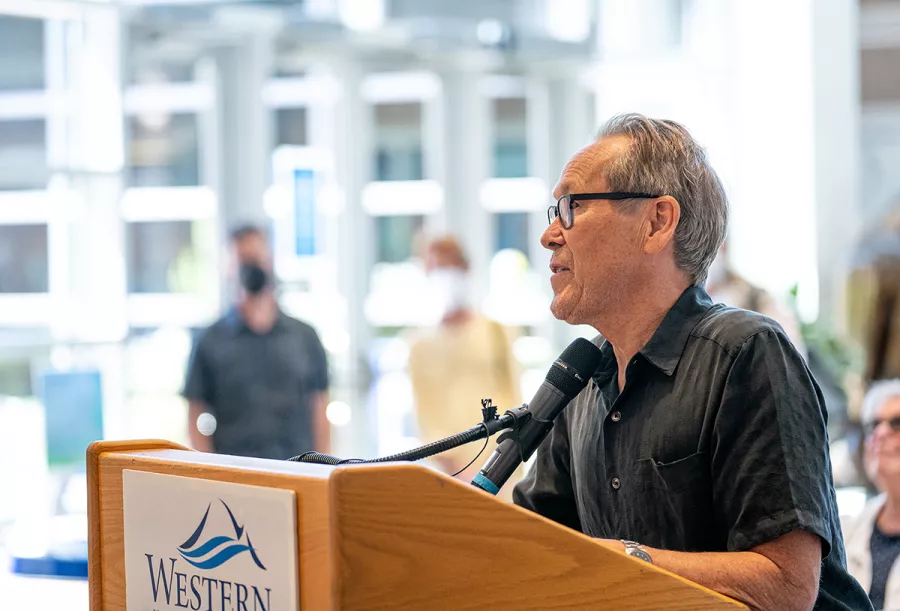
Wright’s children, Bing, Charles, Merrill and Robin Wright, honored her memory by funding the most recent addition to Western’s sculpture collection: Wilson’s two glass chandeliers, “A Moth of Peace” and “The Way the Moon’s in Love with the Dark,” now grace the high-ceilinged walkway that links the Viking Union and the Multicultural Center. (Additional funding for the artwork came from the Washington State Arts Commission’s Art in Public Places program.)
The two pieces are among Wilson’s “recent favorites,” he said at the event celebrating their installation. “They’re very personal to me and I’m really thrilled to have them here.”
The ornate Venetian glass chandeliers are strikingly different from much of the minimalist artwork in the rest of Western’s sculpture collection, and Wright would have loved that, said her son, Bing Wright.
“She collected minimal art, but in truth she was a maximalist,” Bing said at the installation event. “I think she’d love the way these clash with the architecture, and the over-the-top element.”
Virginia Wright’s love of art was voracious, her son said, her knowledge encyclopedic. She traveled to New York City several times a year, often visiting a dozen or more galleries in a day. “She had zero interest in the social cachet of art and was completely oblivious to the investment side of art,” Bing Wright said. She amassed a personal art collection of impressive works, mostly purchased before the artists were famous.
“Anybody can put together a great collection if you have a ton of money and you buy on the secondary market,” Bing said. “It’s a whole different bag to buy it when it was made, buying on the primary market. That’s where you take chances.”
Wright brought that eye for new artists to her partnership with Western, Bing Wright said. When Mark di Suvero’s red I-beams of For Handel first went up on the PAC Plaza, di Suvero was still relatively unknown. Wright’s Triangle was Richard Serra’s first private commission, he said.
“di Suvero, Serra, Nauman, these are all international names now, but they weren’t then,” Bing Wright said. “She was so confident that she was giving great pieces of art by great artists. And the truth was, she was right. They’re incredible things for this university to own.”
